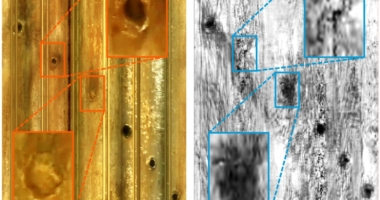Graforce, a German hydrogen technology company, has developed modular plasmalysis plants that can split hydrocarbons, such as methane, into hydrogen and solid carbon using a high-frequency plasma field generated by renewable electricity. Compared to water electrolysis, plasmalysis requires only one-fifth the electrical energy to produce the same amount of hydrogen. Graforce’s power-to-X plants produce carbon dioxide-free or carbon dioxide-negative hydrogen and synthetic feedstocks, with high efficiency and lower infrastructure costs in the multi-megawatt range. The company is expanding its financial and strategic partnerships to scale its hydrogen technology worldwide. Additionally, Graforce’s methane electrolysis technology (plasmalysis) has won the Petronas Race2Decarbonise competition in the “Gas Flaring Reduction or Elimination” category for its groundbreaking solution that converts flare gas and other hydrocarbons into clean hydrogen and solid carbon.
Graforce Wins Petronas Race2Decarbonise for Groundbreaking Flare Gas Reduction Solution
Graforce has been named a winner at the Petronas Race2Decarbonise competition in the “Gas Flaring Reduction or Elimination” category for its methane electrolysis technology (plasmalysis). Out of over 500 global solutions, Graforce’s technology stood out as a groundbreaking solution that could help accelerate the development of low-carbon solutions and reduce greenhouse gas emissions.
Gas flaring is responsible for more than 400 million tons of CO2 emissions every year. Thousands of gas flares at production sites worldwide burn approximately 150 billion cubic meters of natural gas each year, wasting a valuable resource. Graforce’s plasmalysis technology, however, converts methane and other hydrocarbons previously vented or flared into clean hydrogen and solid carbon, producing climate-neutral energy.
The use of hydrogen, a clean and sustainable energy source, can help reduce greenhouse gas emissions and mitigate climate change. Graforce is the world’s first company to offer a market-ready technology that can decarbonize flare gas production and dramatically reduce emissions. Since the proprietary process doesn’t produce any CO2, this technology is also the first alternative to carbon capture and storage.
Dr. Jens Hanke, CTO of Graforce, stated that flare gas plasmalysis is an excellent solution in line with methane emission regulation. The EU can achieve its decarbonization targets if flare/landfill gas, LNG, LPG or natural gas are no longer burned but converted into hydrogen and solid carbon powered with green electricity in Graforce’s hydrogen plants. Europe only accounts for 2% of global routine gas flaring, but the European Union is considering regulation to end routine flaring and venting.
Graforce’s methane electrolysis technology has the potential to significantly reduce CO2 emissions caused by gas flaring. The technology converts flare gas and other hydrocarbons into clean hydrogen and solid carbon, making it a groundbreaking solution for gas flaring reduction or elimination. By providing an alternative to carbon capture and storage, Graforce’s technology could help mitigate climate change and support the EU’s decarbonization targets.
Graforce’s Plasmalysis Plants Use Renewable Electricity to Split Hydrocarbons and Produce Hydrogen
Graforce, a German hydrogen technology company, has developed modular plasmalysis plants that can split hydrocarbons, such as methane, into their molecular components, hydrogen and solid carbon. These plants use a high-frequency plasma field generated by renewable electricity, requiring only one-fifth the electrical energy needed for water electrolysis to produce the same amount of hydrogen.
Graforce’s power-to-X plants produce carbon dioxide-free or carbon dioxide-negative hydrogen and synthetic feedstocks, with high efficiency and lower infrastructure costs in the multi-megawatt range. The company is currently expanding its financial and strategic partnerships to scale its hydrogen technology worldwide.
Don’t miss interesting posts on Famousbio










